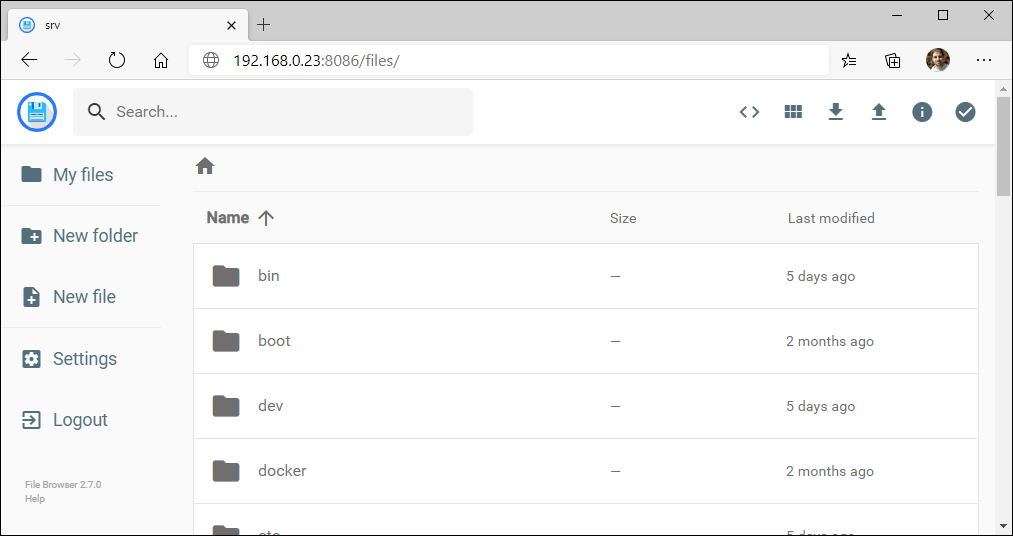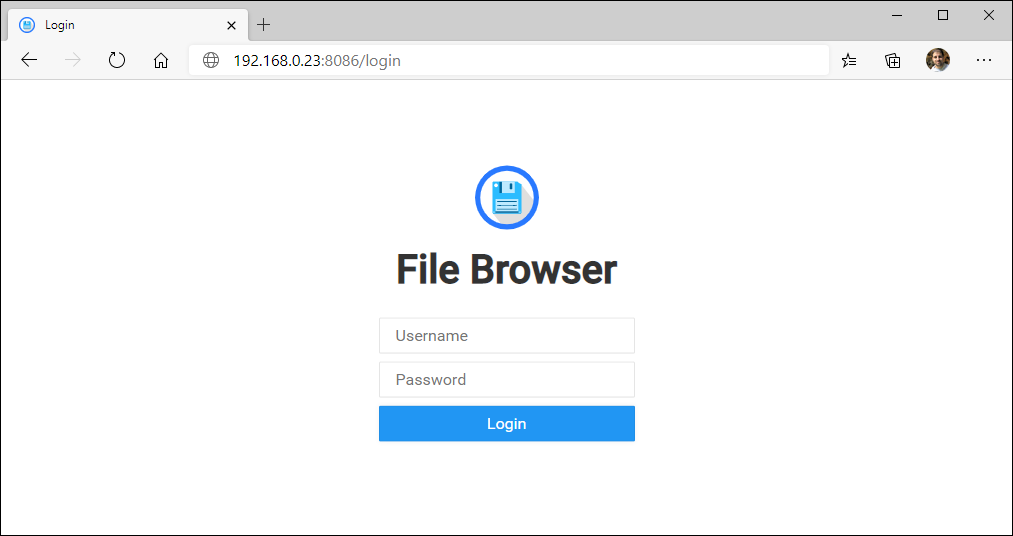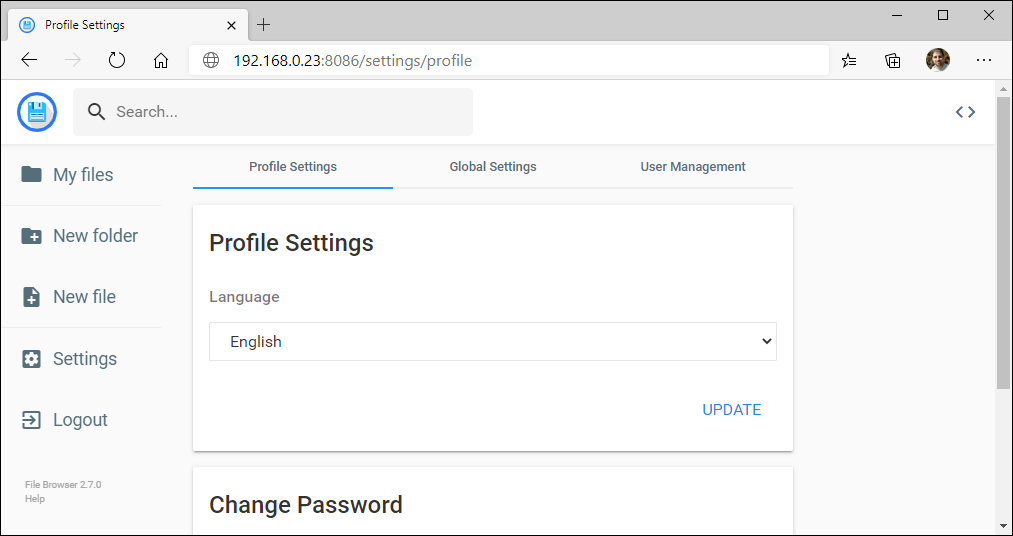Online file browser for your server
When installing an operating system without a desktop, one of the things that is most missed is having a file explorer with which to perform basic tasks. File Browser fills this need by allowing access to files on the server through the web browser.
As if that were not enough, it also includes a file viewer and editor, and a terminal to execute commands.

Installation and Use
Its installation, as usual, will be done by instantiating a Docker container by executing the following command:
$ docker run -d --name=Filebrowser --hostname=filebrowser --restart=always -p 8086:80 -v /:/srv -e TZ="Europe/Madrid" filebrowser/filebrowser:latest
docker run -d: Create a container with the following configuration if it does not exist and start it in background.--name=Filebrowser: The name of the container. This is important because you can have several containers based on the same image.--hostname=filebrowser: The name of the container machine. Optional.--restart=always: Restart the container if it stops. If it stops manually, it is only restarted when the container is manually restarted, or the Docker service is restarted.-p 8086:80: File Browser exposes port80for File Explorer access. As port80is usually used for any Web service; We indicate that port80of the container is exposed for example in port8086. In this way we make other services that want to use port80to use it.-v /:/srv: Links a folder on the server (left), with a folder on the container (right). File Browser uses by default the internal root/srvfolder to display in the file explorer. By indicating the root/in the server folder, we indicate that we want to show all the files on the server.-e TZ='Europe/Madrid': The time zone of the container machine. Optional. It is very useful so that the logs and notifications are with the local time.filebrowser/filebrowser:latest: Indicates the image used to mount the container. If no version is indicated, it will take the latest stable version.
Next, open a Web browser and enter the address: http://YOUR_IP_SERVER:8086. In the next window, the username and password are admin.

From here, you will see the folders and files on the server, and you will be able to perform the typical actions that you would do in any File Explorer.
Options
From the Settings section you can change the user’s language or password, but also other settings such as allowing the creation of other users or activate dark mode.

Conclusion
Now you can access the files on the server using a File Browser. A comfortable and visual way to work.





